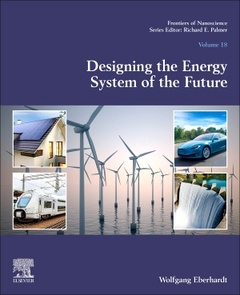Nanoscience for Energy Systems Efficiency Challenges and Future Opportunities Frontiers of Nanoscience Series, Vol. 15
Langue : Anglais
Auteur : Eberhardt Wolfgang

The secure, sustainable and affordable supply of energy in the face of a growing population and increasing demand is one of the grand challenges and basic needs of our society. This has to include all aspects of generation (conversion) transport, storage and efficient utilization of energy. In the past decade, there global drive to rebuild the energy system, as manifested by the climate accord achieved in Paris in 2015, which almost all countries of the world are participating in. While the drive for this change is global, the solutions for each country will have to be individualized depending on the geography and available energy resources. In general however the move is towards de-carbonization of the energy system, i.e. to abandon or replace most of the fossil sources of energy by renewable ones. Nanotechnology, and the use of nanomaterial in particular, play a key role in these solutions. Nanoscience for the Energy System explores how nanotechnology is being used to solve important energy challenges. These include the creation of new technology for transport systems and the generation of chemical fuels without increasing the CO2 content in the atmosphere is another aspect of this challenge. Nanoscience is at the heart of many of these processes and solutions, includingfuel cells, batteries, hydrogen storage, photocatalytic water splitting, advanced materials for solar cells and also the role of aerosols in cloud formation and pollution.
- Outlines how nanotechnology advances are at the core of creating a secure, sustainable and affordable supply of energy worldwide
- Explores how the unique properties of nanomaterials make them highly suitable for applications in energy system design
- Discusses the major challenges in creating a globally efficient energy system and suggests how nanotechnology can provide solutions
1. Introduction - A vision of the Energy System of the Future
2. Fuel cells for the transportation sector:
3. Nanoparticle concepts for photovoltaics:
4. Dye sensitized nanostructured cells for photovoltaics:
5. Nanoparticles for Hydrogen Storage materials
6. Nanoparticle concepts for battery applications
7. Photocatalytic water splitting
8. Catalysis and Energy
9. Nanoparticles in wall coverings for thermal stabilization
10. Electrochrome window materials
11. Nanoparticles in Atmospheric Chemistry and Climate Engineering
2. Fuel cells for the transportation sector:
3. Nanoparticle concepts for photovoltaics:
4. Dye sensitized nanostructured cells for photovoltaics:
5. Nanoparticles for Hydrogen Storage materials
6. Nanoparticle concepts for battery applications
7. Photocatalytic water splitting
8. Catalysis and Energy
9. Nanoparticles in wall coverings for thermal stabilization
10. Electrochrome window materials
11. Nanoparticles in Atmospheric Chemistry and Climate Engineering
Researchers in both academia, government and industry who want to learn more about how nanotechnology is used in the energy sector
Wolfgang Eberhardt is Scientific Director for Energy Research at Helmholtz-Zentrum Berlin, Germany. He has published more than 300 referred publications, focusing on the experimental investigation of the electronic properties of atoms, molecules, and solids as determined with angle-resolved photoemission and (resonant) X-ray emission using synchrotron radiation as the excitation source. His research includes the electronic properties and magnetism of thin-film systems for magnetoelectronic applications and their femtosecond magnetization dynamics. Additionally, his research interests cover the electronic properties and atomic geometry of individual size-selected nanoparticles (clusters). He has done pioneering studies concerning the femtosecond dynamics of core electron excitation and decay processes in molecules and solids: the now well established core-hole clock method. He is a member of numerous scientific advisory boards and he has also been involved in formulating two reports for the US Department of Energy.
- Outlines how nanotechnology advances are at the core of creating a secure, sustainable and affordable supply of energy worldwide the population growth, industrialization and increase in standard of living have put the world on an unsustainable, dangerous path towards increasing climate change
- Explores how the unique properties of nanomaterials make them highly suitable for applications in energy system design existing technologies can be used to generate electricity without producing CO2 and to accommodate the energy needs for industry and commerce as well as living in health and comfort for an increasing population
- Discusses the major challenges
- Describes a pathway for in creating a global, efficient sustainable, and efficient energy system that enables economic growth, a comfortable standard of living and improved health, while eliminating the dangers of climate change
Date de parution : 04-2021
Ouvrage de 500 p.
19x23.4 cm
Disponible chez l'éditeur (délai d'approvisionnement : 14 jours).
Prix indicatif 215,20 €
Ajouter au panierThème de Nanoscience for Energy Systems :
Mots-clés :
Nanotechnology; Solar Cells; Energy Efficiency; Energy Storage; Energy Transport
© 2024 LAVOISIER S.A.S.
